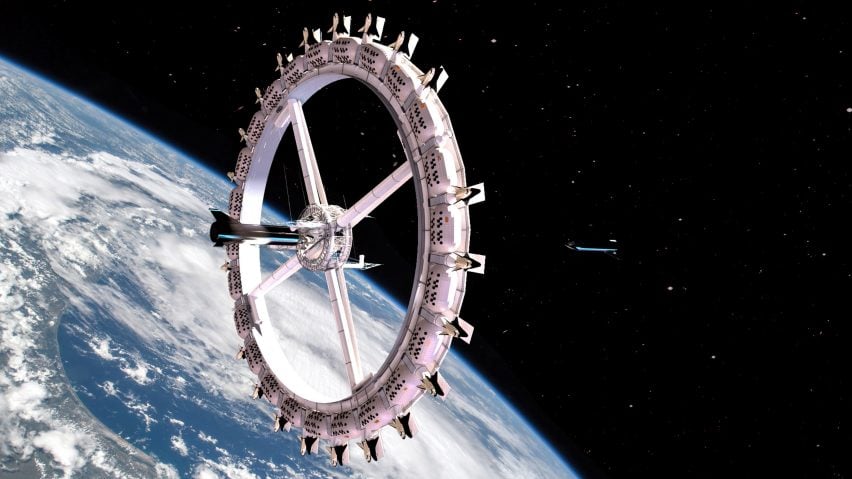
Ten space tourism-related designs including spaceships, space hotels and a space suitcase
Space tourism is a growing trend, with more and more companies offering brief trips beyond Earth. We have rounded up 10 designs for visiting space.
On this day in 1961, now known as the International Day of Human Spaceflight, Soviet cosmonaut Yuri Gagarin became the first person to journey into outer space.
Sixty-one years on, travelling to space as a tourist is becoming a reality, with architects and designers increasingly commissioned to help develop unforgettable experiences for wealthy customers.
Various studios are working on creating the infrastructure specifically to allow people to visit and stay outside of Earth's atmosphere, including high-altitude balloons and orbital space hotels.
Here are 10 projects designed for space tourism:
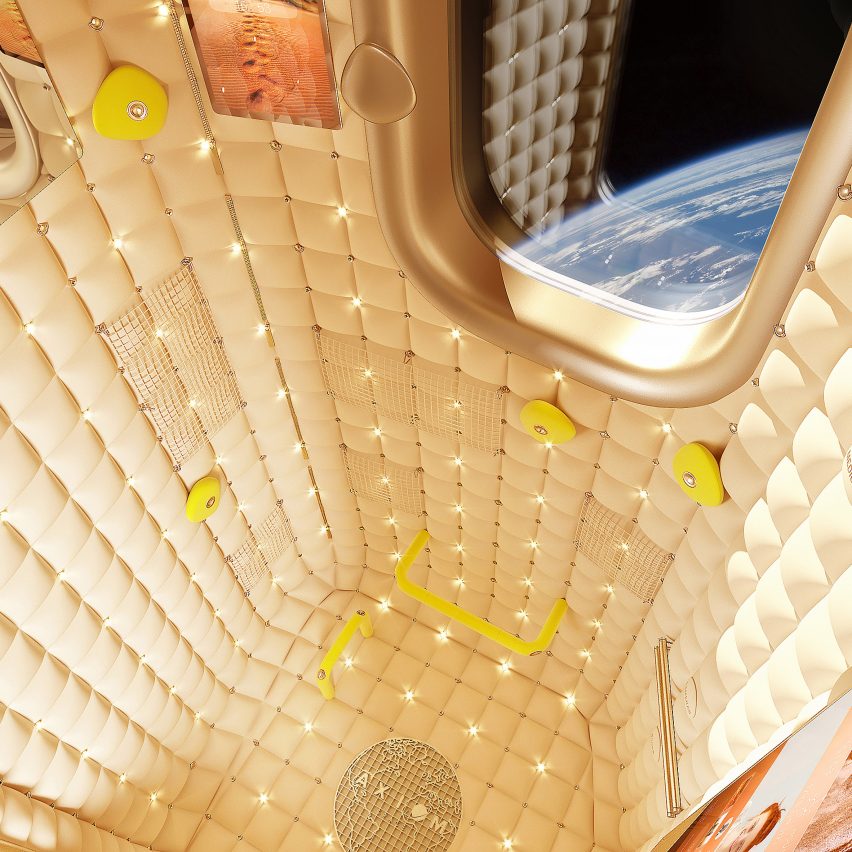
Axiom Station by Phillipe Starck
Privately-owned space exploration company Axiom Space commissioned designer Phillipe Starck to create the interiors for Axiom Station, which claims to be the "world's first" commercial space station.
Axiom Station will be connected to the International Space Station and will include crew quarters, a dining area and a galley habitation module designed with interiors by Starck. He envisioned the module as "a comfortable egg that is inviting with soft walls and a design perfectly in harmony with the values and movements of the human body in zero gravity".
The company plans to offer private individuals 10-day expeditions to the space station at a cost of £41 million per ticket.
Gold-capped, rounded windows frame views of the earth below, while clusters of nano lights change colour depending on the time and where Axiom Station is travelling in relation to our planet.
Find out more about this space station ›
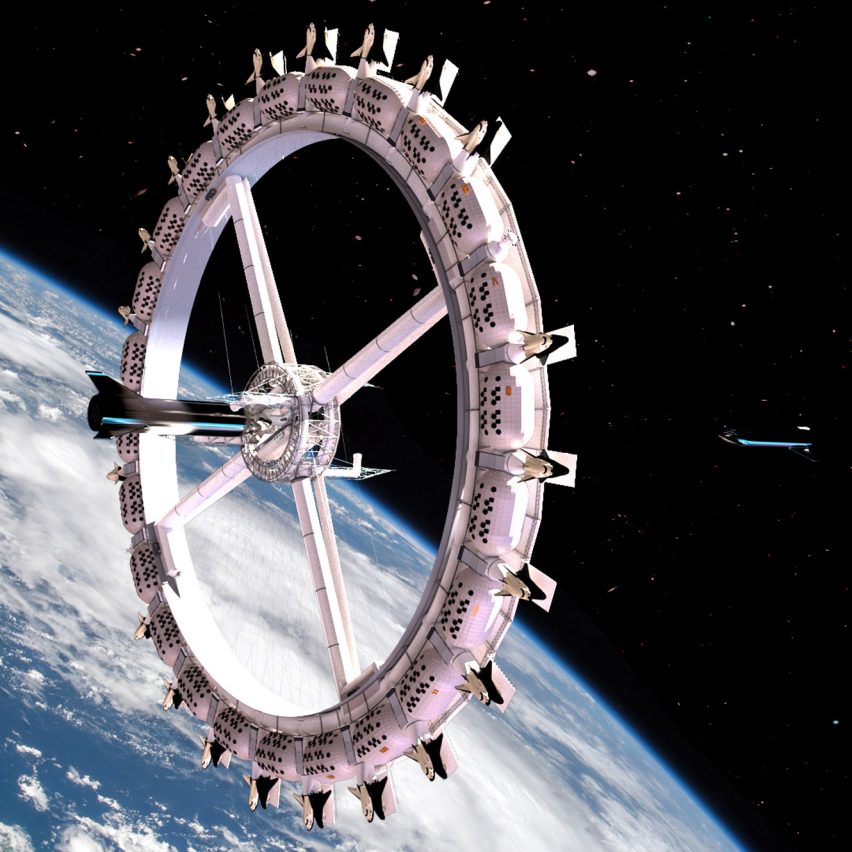
Voyager Station by Orbital Assembly Corporation
Planned to open in 2027, Voyager Station was designed as the first hotel in space and will have a rotating structure with rooms for up to 440 guests.
A total of 24 habitation models will house both luxury villas and individual bedroom units, as well as restaurants, bars and gyms, with additional crew accommodation and scientific research pods also included in the ring-like architecture.
Find out more about Voyager Station ›
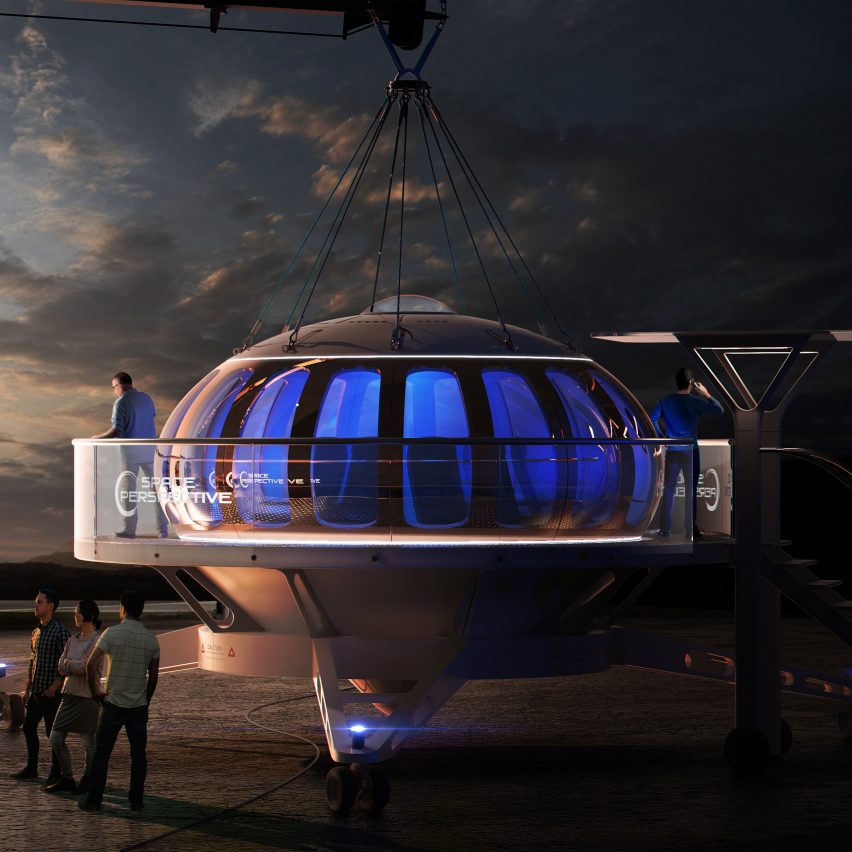
Neptune by PriestmanGoode for Space Perspective
Transport design studio PriestmanGoode created Neptune for space tourism startup Space Perspective to take tourists on a cruise-like journey to the stratosphere.
Set to offer trips by the end of 2024, Neptune will take the form of a spinning top-shaped pressurised pod lifted by a giant, high-altitude balloon filled with hydrogen.
"Our core mission is to take people to space to have this mind-blowing experience of seeing Earth in space and connecting deeply with our planet, and then, hopefully, some of them coming back and doing something amazing with that energy," said Space Perspective co-founder Jane Poynter in a recent exclusive interview with Dezeen.
Space Perspective has also revealed the design for the interior of its capsule, dubbed the Space Lounge.
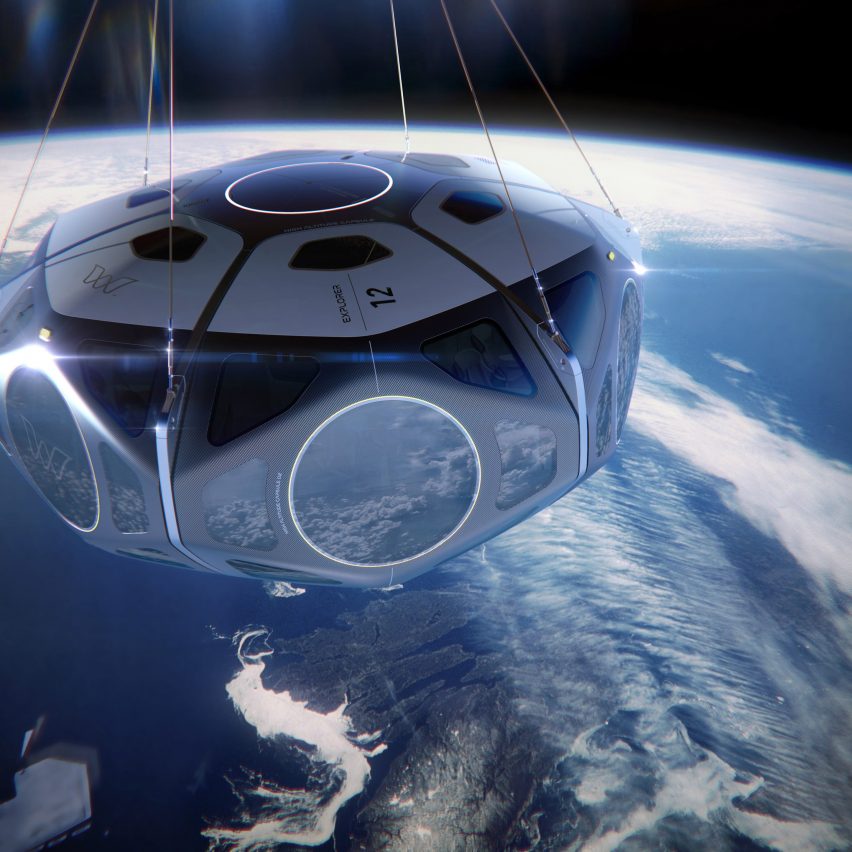
The Explorer Capsule by PriestmanGoode for World View
Space exploration company World View recently unveiled a concept for a tourist-bearing vessel that will be floated to the edge of the Earth's atmosphere attached to a giant balloon.
As with Space Perspective's model, listed above, it is also set to begin commercial spaceflights in 2024 and was also designed with the help of PriestmanGoode. However, it will use helium as a lift gas as opposed to hydrogen.
The Explorer is planned to lift off from spaceports at major global landmarks like the Great Barrier Reef for celestial day trips, with passengers sat in comfy seats accompanied by screens and even a cup holder.
Find out more about The Explorer Capsule ›
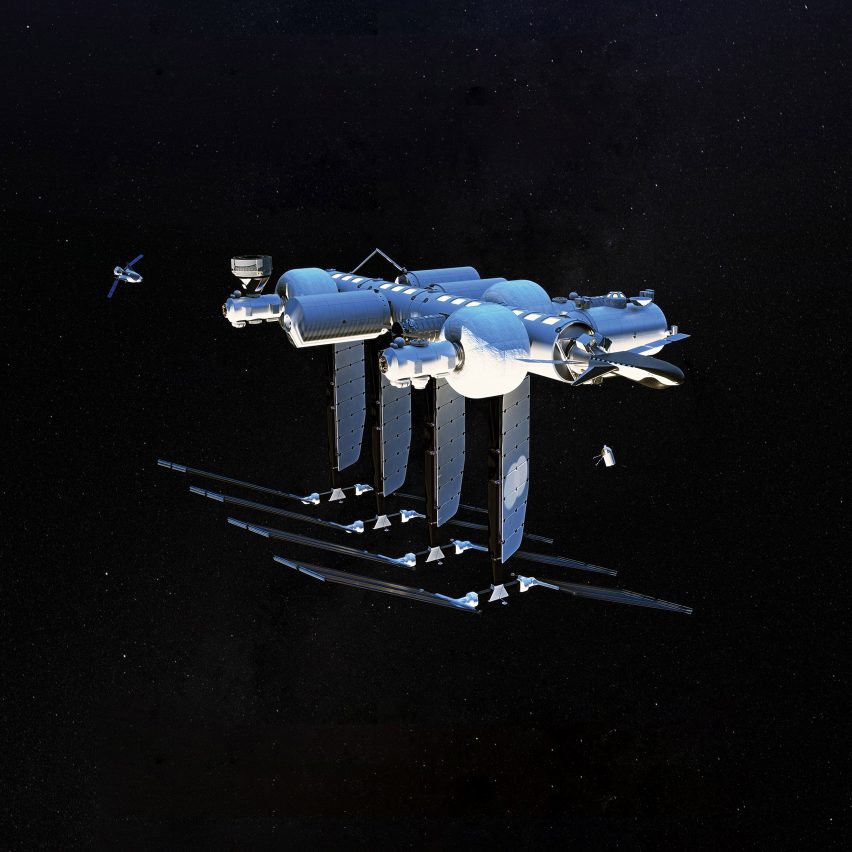
Amazon founder Jeff Bezos' Blue Origin spaceflight company is one of the most high-profile players in the increasingly competitive race to commercialise space.
The Orbital Reef space station is targeted more directly at firms than tourists, intended to be a "mixed-use business park" providing the infrastructure needed to open new markets in space.
It will be built as a place to live for an extended period of time and do research – all while remaining in an orbit close to Earth that provides views of our planet from the station's windows.
Find out more about Orbital Reef ›
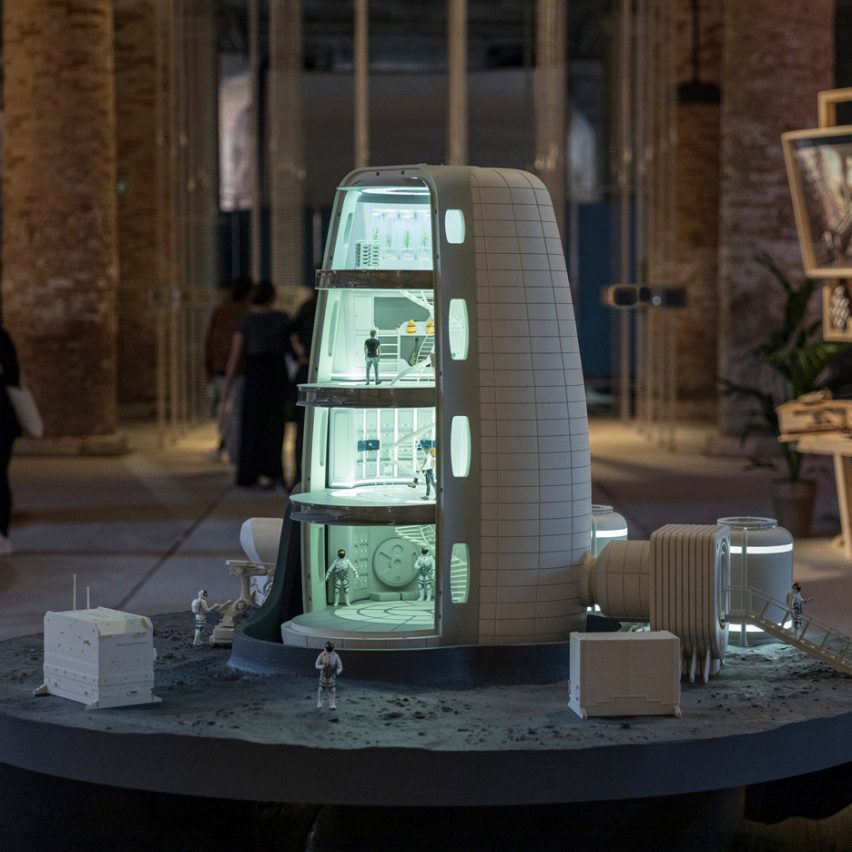
Moon Village by SOM for the European Space Agency
Architecture office SOM and the European Space Agency devised plans for a collection of inflatable habitats for conducting scientific research on the moon.
Named Moon Village, the four-level units would be located in the moon's south polar region in order to harvest sunlight for energy. They were designed to be inflatable so that they could be transported in a compressed format.
According to SOM, Moon Village could grow from a centre for research into a thriving settlement, including offering opportunities for space tourism.
Find out more about Moon Village ›
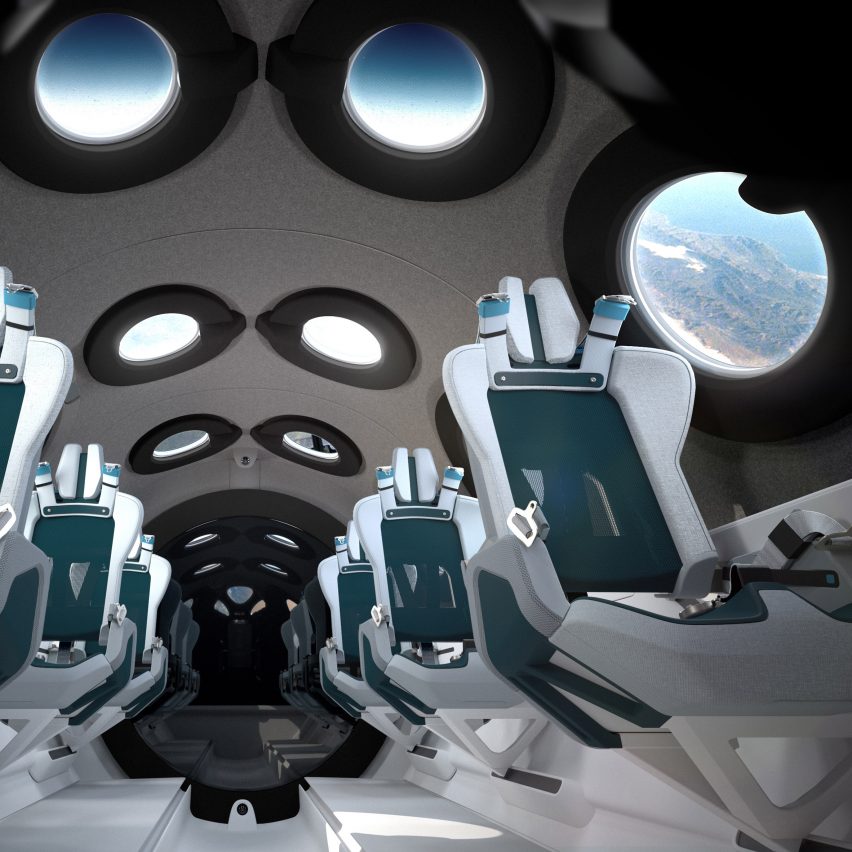
SpaceshipTwo by Seymourpowell for Virgin Galactic
Richard Branson's American spaceflight company Virgin Galactic created the interior design for its SpaceshipTwo craft in collaboration with London studio Seymourpowell.
White, silver and teal accents colour the cabin – a palette intended to be reflective of the earthly views that can be seen from the porthole-style windows framing individual seats.
A large mirror was placed at the back of the structure to enhance the feeling of zero-gravity that passengers experience by watching themselves float around the cabin.
Find out more about SpaceshipTwo ›
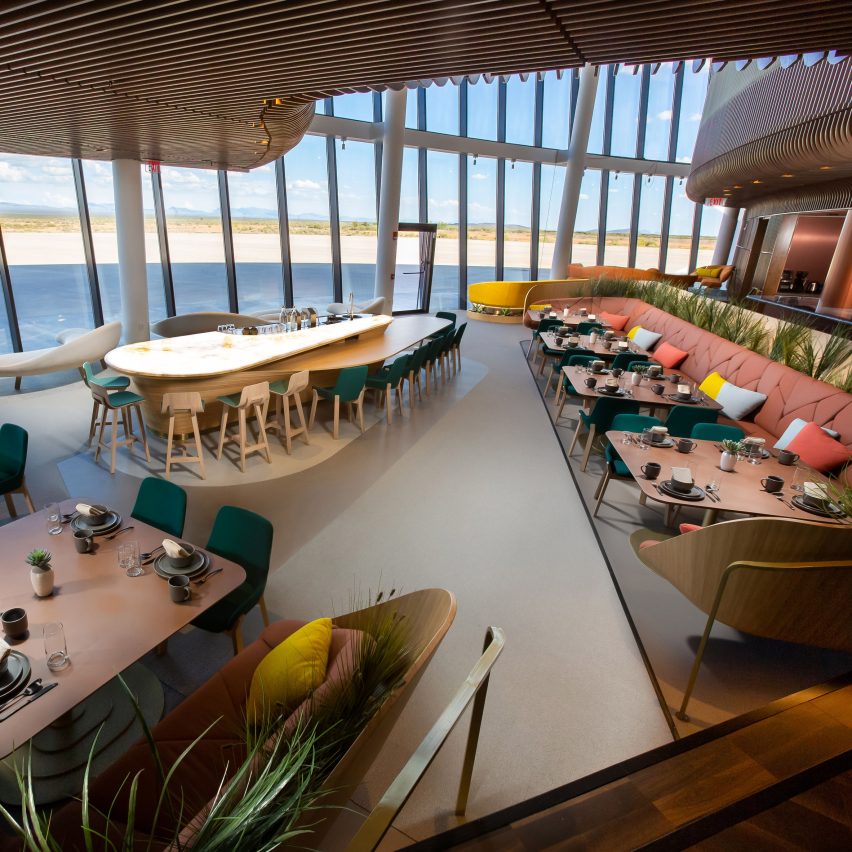
Gateway to Space by Foster + Partners and Viewport Studio for Virgin Galactic
As well as spacecraft like SpaceshipTwo, space tourism companies are also piling resources into the design of their launch bases.
One example is Virgin Galactic's Gateway to Space in New Mexico, USA, part of Spaceport America – the "world's first" commercial spaceport.
The Gateway to Space building was designed by UK architecture firm Foster + Partners and completed in 2011, with full-height glazing wrapping around one aspect.
London-based Viewport Studio completed the interior fit-out in 2018, using natural tones intended to complement its desert surroundings and "deliberately avoid the clichés of the space age".
Find out more about Gateway to Space ›
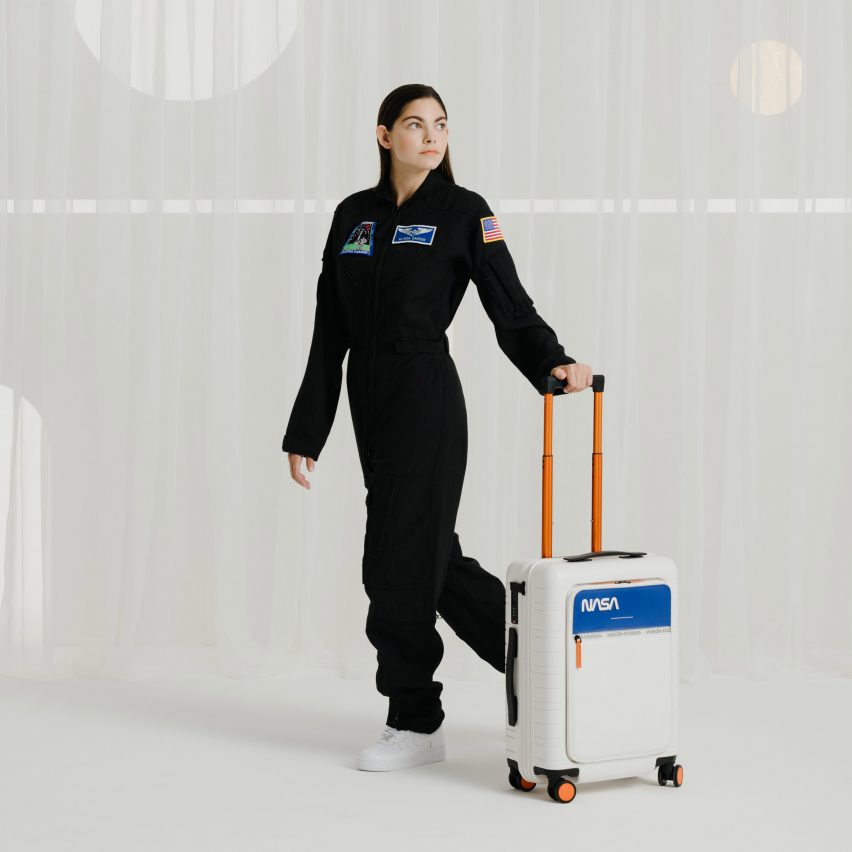
Horizn One suitcase by Horizn Studios and Alyssa Carson
Designs for new paraphernalia associated with space tourism are also beginning to emerge. In 2019, Berlin-based luggage brand Horizn Studios collaborated with the world's youngest astronaut, Alyssa Carson, to develop what it claims is the world's first luggage for space travel.
The Horizn One suitcase concept has a shell made from graphene-reinforced carbon fibre, to make it extra strong and flexible as well as ultra-lightweight.
It would also have an electromagnetic base to be able to attach to spacecraft walls in zero gravity and an in-built smart screen to connect travellers with their friends and family back on Earth.
Find out more about Horizn One ›
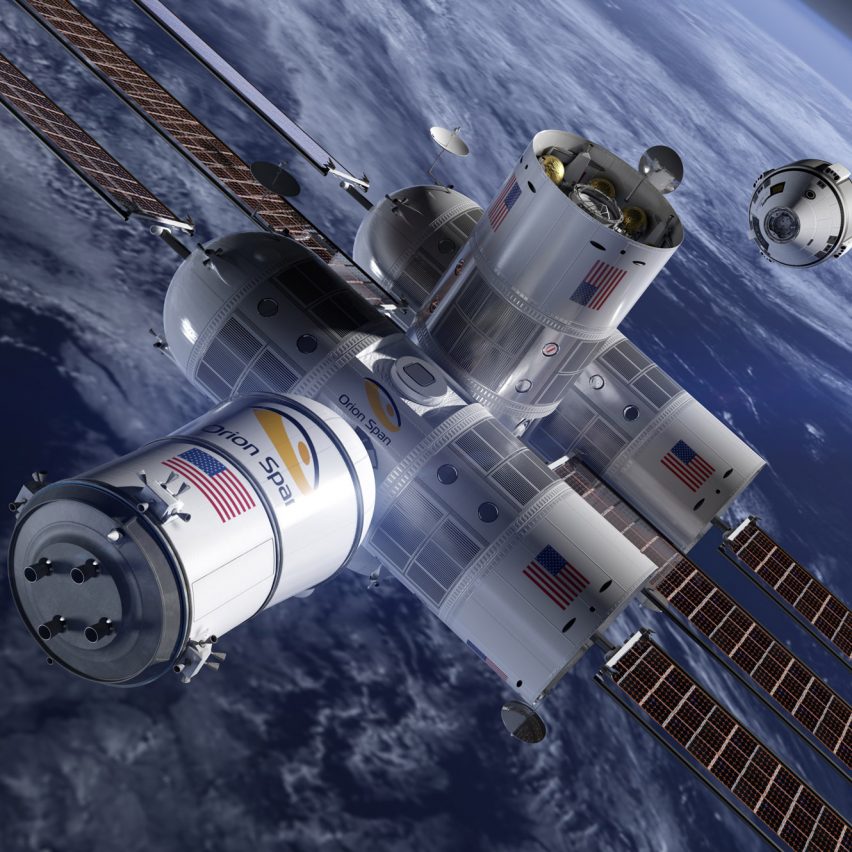
Converting the vision of space tourism projects into reality can still pose a challenge, as demonstrated by Texas start-up Orion Span.
The firm made headlines in 2018 with its £70 million plans for Aurora Station, the first space hotel, initially expected to open in 2022.
Deposit-paying guests willing to meet the full £6.7 million ticket price were promised 12 days of orbiting the Earth experiencing zero gravity and participating in scientific research
But, as reported by Space News, Orion Span struggled to achieve its funding ambitions. By spring 2021, a message appeared on the company's now-defunct website stating that it had shut down its operations and refunded deposits.
Find out more about Aurora Station ›